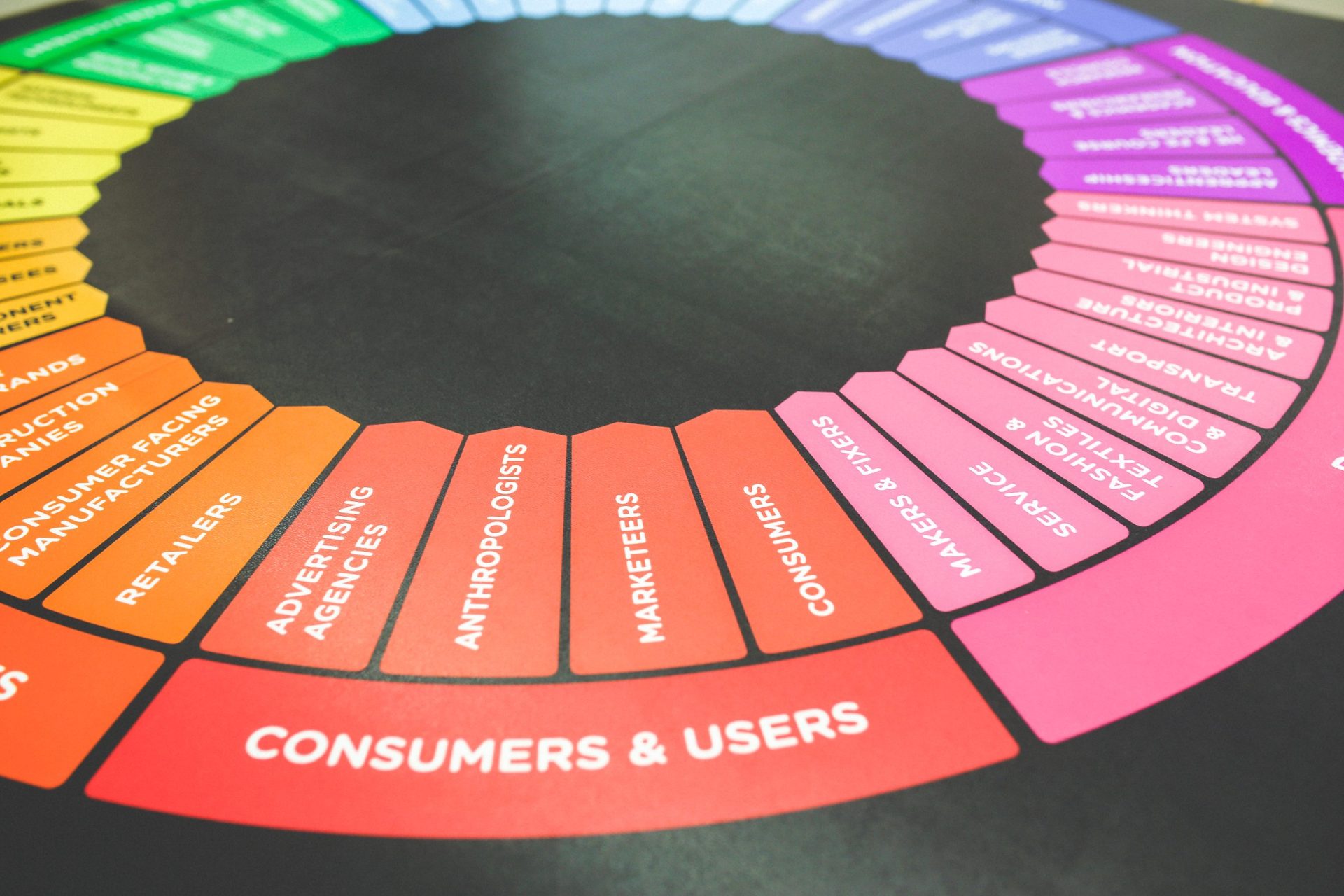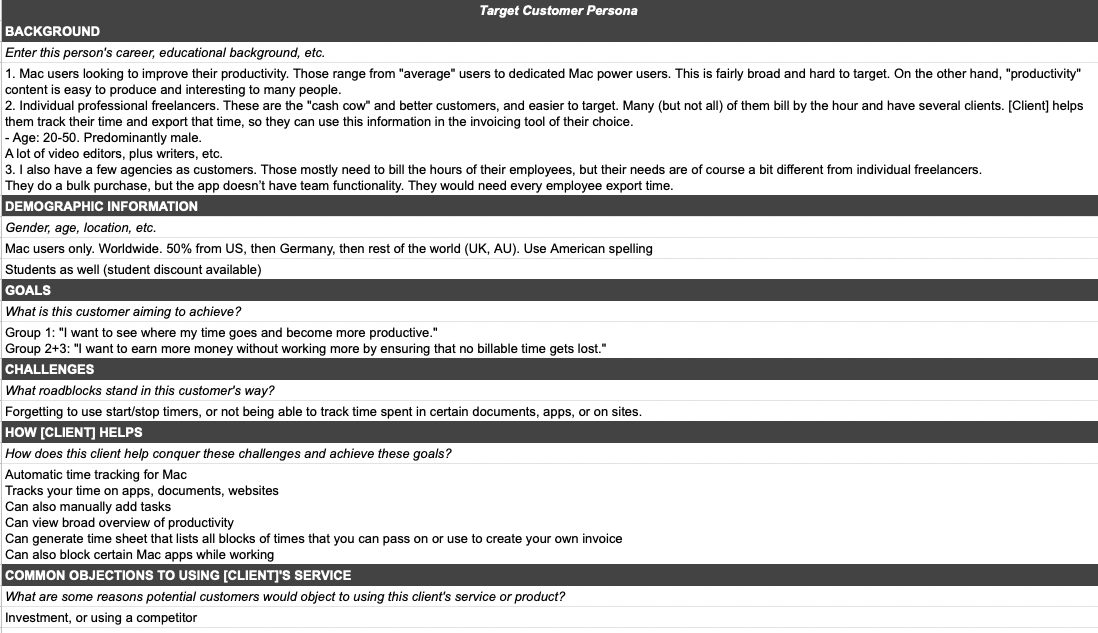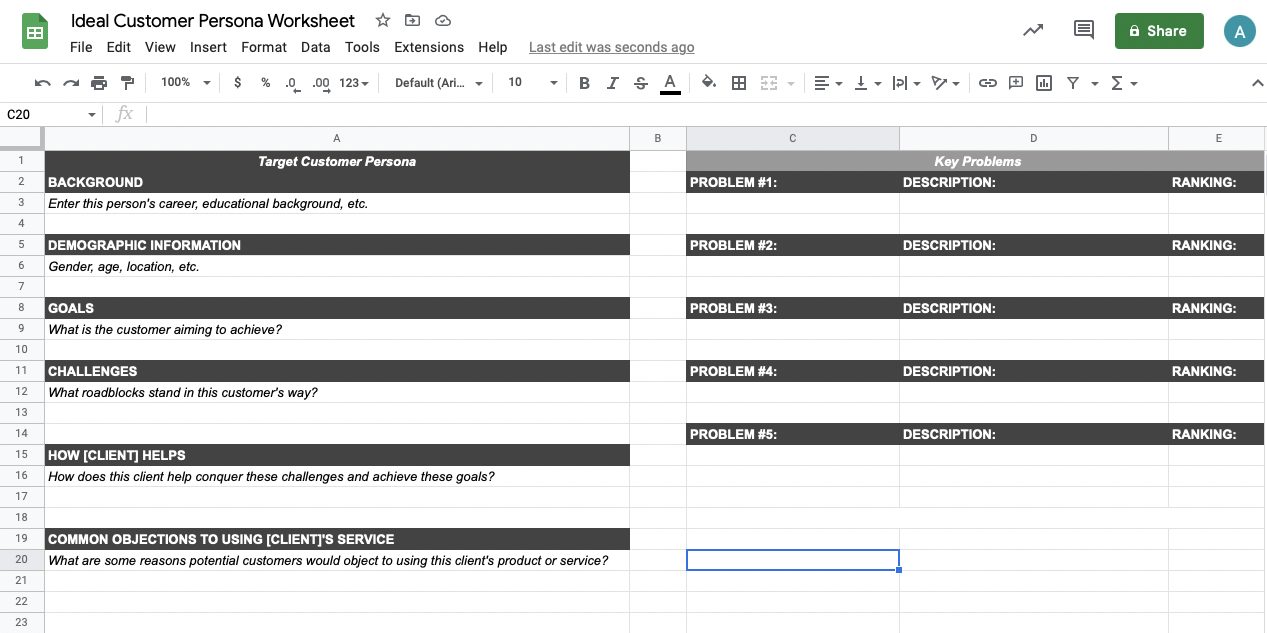Take a minute to think of something that you know absolutely everybody likes. What came to mind? Vacations? Well, time off actually stresses some people out more than it relaxes them. Puppies? Some people are afraid of or allergic to dogs. Chocolate? As strange as it might seem, not everybody loves it.
It’s hard to think of something, isn’t it? People are different—we all like, want, and need different things. Our choices are motivated by our personal thoughts and preferences. Emphasis on the word personal.
Your business works the same way. It’s not a “one size fits all” solution. There are certain people who will absolutely love your product or service and rave about it until the cows come home. Others? They simply won’t see the point or value in what you’re offering.
It’s for this very reason that it’s so important to identify your ideal customer—and that’s exactly what we’re talking about here. From defining what exactly an ideal customer is to actionable tips you can use to discover your own, this post will help you narrow your focus and refine your strategies. Let’s get into it!!
Skip the work. Audience Ops will help you define a content strategy that speaks directly to your ideal customer. Or let us manage the whole process with our done-for-you content marketing service.
What is an Ideal Customer?
Before you can charge ahead and zone in on your target, you first need to have a solid handle on what exactly an ideal customer is.
When you think about it this way, the entire concept is quite simple: Your ideal customer is someone who gets their exact needs met by what you’re offering. Makes sense, right? But smart companies niche it down even further to develop a true, comprehensive understanding of their customer.

Let’s take the example of a car salesman who sells luxury vehicles. He isn’t interested in just any customer. In fact, most people who want to buy a car are not his customers. He’s not going to spend a lot of time with a college graduate who’s looking for a $2,000 beater. Instead, he’ll focus his time and energy on high-income professionals—likely in their 30s to 50s—who want a car that’s a status symbol.
For SaaS companies, the ideal customer is often more specific, and it’s not always the person who uses the product. For instance, if you sell a CRM platform, your customer might be the manager or marketing director, not the frontline sales team that uses it the most.
At Audience Ops, we document our findings in a spreadsheet that’s shared with our clients. We use this living document to refine the ideal customer over time as we learn more and as business needs change.

What’s important is that you can make this connection:
Customer > Problems > Product
That’s to say that your customers experience problems that are solved by your product. If your product doesn’t solve their problems, then they aren’t your customer.
In this sense, your ideal customer isn’t just someone who wants to use your product, but also someone that’s deserving of your marketing efforts. There’s no sense targeting that salesperson if they don’t have the authority to buy your product.
Furthermore, your current customers may not be your ideal customers, even if you’ve had success selling to them. It’s okay to recognize that another group deserves more of your attention.
For example, one Audience Ops client came to us with a broad range of ideal customers. They originally wanted to reach business owners and professionals. Vague, right? This target was so broad, in fact, that it didn’t resonate with anyone. Through our work together, we helped them refine their ideal customer into something targetable: people trying to get a job in the startup world. This narrowing allowed us to address key problems their customers face so their content has more depth and appeal.
Your current customers may not be your ideal customers, even if you’ve had success selling to them. It’s okay to recognize that another group deserves more of your attention.
How Do You Find Your Ideal Customer?
When we work with a client, our first step is to understand the product or service. Our second step is to identify the ideal customer. Failing to identify your customer could cause you to spend a lot of marketing dollars hunting the wrong people, so these steps are important.
(Need help finding your ideal customer? As a full-service content agency, we can help you find and strategize content for your customer, even if you don’t need us to produce the content.)
Step One: Know Your Product or Service
First thing’s first, you need to have a solid understanding of your business. That doesn’t just mean knowing the ins and outs of your financials or being able to recite your website copy in your sleep. Instead, you need to have deep knowledge of your business from your customer’s point of view.
When we help brands develop content for their sites, we spend our first two discussion calls honing in on the customer. We use our proven questionnaire to extract as much information from our clients’ heads as possible, then follow it up with our own research.
Jot down exactly what you offer to your customers. What problems do you solve for them or what challenges do you address? Why should people buy from you instead of your competitors? What sets you apart?
Who actually benefits the most from your product or service? When it comes to this question, you need to be honest with yourself. It’s not enough to determine who you want to benefit most—you need to identify who is actually finding value in your offerings right now.
You can store this information in the same Ideal Customer Persona Worksheet we use at Audience Ops. Simply open the worksheet and click File > Make a copy to save your own. List what you know about your customer on the left side, then summarize their key problems on the right side. This will help you develop content and other marketing assets to reach them.

Step Two: Determine Your Goals
Once you’ve looked at your business through your customer’s eyes and identified who is currently buying from you, it’s time to determine what your goals are.
Are you happy with this current type of customer and, more importantly, are they happy with you? Or, do you feel that you’re not appropriately targeting the people who would value your business the most? For example, you’ve been working with a lot of startup founders, but would like to form partnerships with more enterprise-level companies.
Keep in mind that you aren’t stuck with one customer group. Many businesses—especially SaaS organizations—create multiple segments. We find it helpful to divide our clients’ customers into segments for more accurate content targeting, but you can use segments for any type of marketing—social, email, paid advertising, etc.

As mentioned above, your current clients or customers may not be your ideal ones. Maybe you’ve noticed that your customer retention rate is really low—people are buying once, but not returning. Perhaps you’ve been on the receiving end of a lot of customer complaints. Or, maybe you just want to shift your focus, change your business model, and reach a totally different audience.
This is the time to outline your goals. Determining what specifically you want to achieve will help you alter your strategies when it comes to your customers. Just think—if our car salesman set a goal of reaching $10 million in sales this year, he’s probably going to stay far, far away from those broke college kids.
Step Three: Analyze Past Interactions
Your past interactions with customers can reveal a lot—both good and bad. Combing through any major mistakes and successes with previous or existing customers will definitely help you in narrowing your focus.
First, look back on any huge flubs that made your stomach turn. Did those incidents have anything in common? Perhaps you had a misalignment of language by failing to use a key phrase they find meaningful. Perhaps you understated the severity of one of their problems.
Also take some time to go through any big wins. Whether it’s reading through your customer testimonials or paging through old emails to find those major accomplishments, you should also try to identify any common threads here. Maybe those customers all had the same problem you were able to address with your product or service. Perhaps they were all in the exact same industry.
Sort through your past interactions and pull out what you can. That information will all be incredibly valuable in the next step.
Schedule a Demo with Audience Ops
We'll share how we can help you identify your ICP and create content that converts.
"*" indicates required fields
Step Four: Build a Customer Profile
You’ve done your research, put in the legwork, and are ready to outline everything that makes your customer tick. This is when you’ll build your customer profile, which shares all of that need-to-know information about who exactly you’re trying to target.
This process involves answering some important questions that cover everything from basic demographics to what influences their buying decisions. Find out as much as you possibly can about your particular customer.
Here are some basic questions to get you started:
- Who are your current customers? Who has already purchased from you?
- Do you want to continue targeting these same people or do you want to shift your focus?
- If you want to shift your customer focus, explain why. Why exactly do you want to target a different group of customers? What will this accomplish for your business?
- How did your current customers discover your business?
- Who is currently benefiting most from your product or service? Describe them.
- What specific problem or challenge is your product or service solving for these people?
- What has feedback from your existing customers been like?
- When you started this business, who did you specifically intend to help?
- Are those people the ones that are currently buying from you? If not, why?
If you really want to get inside your buyers’ heads, customer interviews are an effective tool. Pick a few of your current customers and set up a time to chat. Ask the right questions, and you’ll learn what they love about you, what they don’t like about you (I know, ouch), as well as what inspired them to choose you over your competitors. That information straight from the horse’s mouth is invaluable.
Step Five: Remember Your Hard Work
So, you pulled together a detailed profile of your ideal customer and made sure everyone on your team was on the same page. Now what?
Unfortunately, many businesses make the mistake of putting all of the time and research in, and then just letting that information sit there unused. If your goal is to target those specific customers in order to continue improving your business, you need to always keep the information you gathered at the top of mind. It should influence every move and decision you make.
For instance, suppose you decide that your ideal customer isn’t just “moms,” but “busy moms who handle all of the household management.” That little bit of detail can change the kind of social media content you produce, the Facebook groups you engage with, the email copy you send, and the subjects of your blog posts.

Simply saying you want to target those people isn’t enough—the act of defining your ideal customer won’t bring them to you. You need to take that information, put it into play, and get to work!
How Audience Ops Helps Find Your Ideal Customer
At Audience Ops, we use a proven customer research project to help you find your ideal customer. We collaborate to identify your Ideal Client Persona (ICP). Our goal is to learn who benefits most from your services, pays without second guessing your work, and recommends you to future clients. Our process works like this:
- Review your current and past client roster, as well as any promising lost opportunities.
- We categorize your clients by industry, project type, work vibe (easy to work with vs difficult), growth phase, financial stability, and other important criteria
- We look for intersections between happy clients and happy company experiences
- We isolate one top tier persona to target, and two or three sub-personas (if you decide to pursue multiple adjacent verticals).
- We interview existing and past clients to find out what their buying journey was like (what mattered to them and why you won their business). Most importantly, we identify how they discovered your company.
- We interview lost opportunities in your ideal customer profile to discover and document why your company was not their choice (and what influenced their buying decision).
- We create a master persona dossier documenting who you should target, why, and what their ideal buying journey is (what they need to know to decide to close and when, plus the common leading indicators that the relationship will work really well).
Final Thoughts
Identifying your ideal customer can seem like an overwhelming and daunting task. However, it’s an important step in growing and improving your business, and with these five steps, the process doesn’t need to be overly complicated. Follow along and you’re well on your way to not only reaching new customers—but the right ones.
Any marketing investment is pointless if you’re going after the wrong customer. You could waste a lot of money by targeting people who will never buy your product, which is why it’s so important not to leave this at chance. If you aren’t sure that you’ve identified your ideal customers, it’s important to work with a qualified agency that has experience helping clients work this out.
Audience Ops uses a proven system, streamlined process, and expert team to help you perform in-depth research, plan great topics, and create search-engine optimized high-quality content. Plus, we handle all of the blog publishing and distribution to your audience. All tailored for your audience, in your voice, and weaving in your key insights.
We can help you find and target the customers who impact your business the most. Schedule a call to learn more.